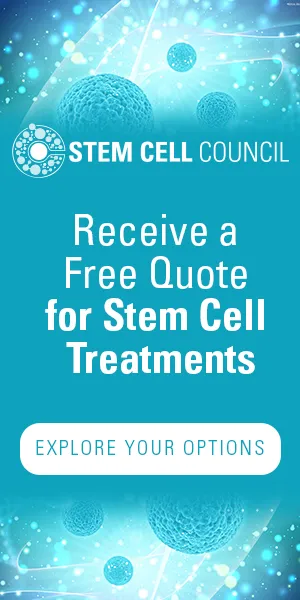Introduction
Stroke is a debilitating condition that affects millions of people worldwide. It occurs when the blood supply to the brain is disrupted, leading to the death of brain cells and subsequent loss of bodily functions. Traditional stroke rehabilitation methods have limitations, but recent advancements in medical science have shown promising results in the form of stem cell therapy. This article explores the potential of stem cell therapy for stroke rehabilitation in Mexico, highlighting its benefits, treatment process, and the role of Mexico in providing advanced stem cell treatments.
Understanding Stem Cell Therapy
Stem cell therapy is a groundbreaking medical procedure that utilizes the regenerative capabilities of stem cells to repair damaged tissues and promote healing. Stem cells are unique cells in the body that have the ability to differentiate into various cell types and regenerate damaged or diseased tissues. In the context of stroke rehabilitation, stem cell therapy aims to stimulate the repair and regeneration of brain cells that have been affected by the stroke.
Benefits of Stem Cell Therapy for Stroke Rehabilitation
- Regeneration of Brain Cells: Stem cell therapy offers the potential to regenerate damaged brain cells, promoting the recovery of lost functions caused by stroke. By injecting stem cells directly into the affected area, researchers believe it is possible to initiate the growth of new neurons and blood vessels, enhancing the brain's ability to repair itself.
- Reduction of Inflammation: Stroke triggers an inflammatory response in the brain, which can worsen the damage caused by the initial event. Stem cells have anti-inflammatory properties that can help reduce inflammation in the brain, potentially minimizing secondary damage and improving recovery outcomes.
- Neuroplasticity Enhancement: Stem cells have the ability to enhance neuroplasticity, which is the brain's capacity to reorganize and form new connections. By promoting neuroplasticity, stem cell therapy may facilitate the rewiring of the brain after a stroke, aiding in the recovery of lost functions.
- Improved Motor and Cognitive Function: Studies have shown that stem cell therapy can lead to significant improvements in motor function, speech, and cognitive abilities in stroke patients. The regenerated brain cells and enhanced neuroplasticity resulting from stem cell therapy contribute to these positive outcomes.
Stem Cell Therapy in Mexico
Mexico has emerged as a leading destination for stem cell therapy due to its advanced medical facilities, skilled healthcare professionals, and favorable regulatory environment. The country boasts renowned clinics and research institutions that specialize in stem cell treatments, providing patients with access to cutting-edge therapies for stroke rehabilitation.
Mexican clinics offering stem cell therapy for stroke rehabilitation adhere to international medical standards and employ highly trained physicians who specialize in regenerative medicine. These clinics use state-of-the-art technology and follow stringent protocols to ensure patient safety and treatment efficacy.
Treatment Process
The process of stem cell therapy for stroke rehabilitation typically involves the following steps:
- Consultation and Evaluation: Patients undergo a thorough evaluation to determine their eligibility for stem cell therapy. Medical history, diagnostic tests, and physical assessments help medical professionals tailor the treatment plan to individual needs.
- Stem Cell Collection: Stem cells used in the treatment can be obtained from various sources, such as bone marrow or adipose tissue. These cells are collected using minimally invasive procedures performed by experienced medical professionals.
- Laboratory Processing: The collected stem cells undergo processing and isolation in specialized laboratories to ensure their purity and quality. This step is crucial to maximize the therapeutic potential of the stem cells.
- Stem Cell Implantation: The stem cells, now prepared for treatment, are administered to the patient through targeted injections. This delivery method ensures precise placement of the cells in the affected areas of the brain.
- Post-Treatment Care and Rehabilitation: Following stem cell implantation, patients receive comprehensive post-treatment care, including physical and occupational therapy. This holistic approach aims to optimize recovery outcomes and enhance the integration of the newly regenerated cells into the existing neural networks.
If you want to learn more about stem cell treatment options for stroke rehabilitation, we encourage you to visit www.stemcellcouncil.com. The Stem Cell Council is a trusted resource that provides comprehensive information about the latest advancements in stem cell therapy, including its applications in stroke rehabilitation. By visiting the website, you can access valuable resources, research articles, and testimonials from patients who have undergone stem cell therapy.
In addition, we offer a special opportunity for all patients seeking a free quote for stem cell treatment. Simply visit www.stemcellcouncil.com/free-quote and fill out the form to receive a personalized and complimentary quote. This allows you to explore the treatment options available and make an informed decision regarding your stroke rehabilitation journey.
Conclusion
Stem cell therapy holds immense potential for stroke rehabilitation, offering new hope to those affected by this life-altering condition. The regenerative properties of stem cells, coupled with advancements in medical science, have paved the way for innovative treatment approaches that aim to restore lost functions and improve the quality of life for stroke survivors.
Mexico has emerged as a leading destination for stem cell therapy, with its advanced medical facilities, skilled healthcare professionals, and commitment to patient care. Through targeted stem cell injections, patients can benefit from the regeneration of brain cells, reduction of inflammation, enhanced neuroplasticity, and improved motor and cognitive function.
If you or a loved one is seeking alternative options for stroke rehabilitation, consider exploring the potential of stem cell therapy. Visit the Stem Cell Council website at www.stemcellcouncil.com to learn more about the treatment options available and take advantage of the opportunity to receive a free quote via www.stemcellcouncil.com/free-quote. Together, we can unlock the transformative power of stem cells and help stroke survivors regain their independence and quality of life.








